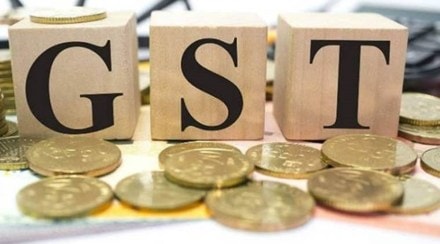Buoyant goods and services tax (GST) collections and central tax devolution will be revenue growth drivers for states in the current fiscal, even as sales tax on petroleum products will likely remain flattish, according to Crisil.
Overall revenue of India’s top 17 states, which account for 85-90% of aggregate gross state domestic product (GSDP), is likely to grow at a moderate pace of 7-9% in FY23, after galloping about 25% in FY22, the rating agency said in a report. Last fiscal, however, growth was on a flattish base of FY21, due to a slowdown in the economy caused by the pandemic.
GST collections and devolutions from the Centre — together comprising 43-45% of the states’ revenue — are expected to grow 19% and 15% on year in FY23, respectively.
Also read: Commerce department rejig to make it future-ready: Piyush Goyal
Growth from buoyant GST collections will, however, be somewhat moderated by flattish or low single-digit growth in sales tax collections from petroleum products (8-9% of total revenue) and grants recommended by the Fifteenth Finance Commission (13-15%).
“The biggest impetus to revenue growth will come from aggregate state GST collections which had already rebounded ~29% on-year last fiscal. We expect this momentum to sustain and collections to further increase ~20% this fiscal, supported by better compliance levels, higher inflationary environment and steady economic growth,” said Anuj Sethi, senior director, Crisil Ratings.
In addition, the share of states in central taxes is expected to grow further. The central tax devolution kitty, which expanded by about 40% last fiscal, should further grow about 15% this fiscal, the rating agency said.
On the other hand, the expected 25% on-year rise in crude prices in the current fiscal, and better sales volumes, would be offset by the reduction in central excise on petrol and diesel in November 2021 and May 2022, followed by a reduction in sales tax rates by some states.
Also, various grants provided by the Centre, including grants towards centrally sponsored schemes, Finance Commission grants and revenue deficit, are likely to see only marginal growth this fiscal, based on the budget calculations and Finance Commission stipulations.
Furthermore, on expected lines, GST compensation payments (7-9% of revenue in the past two fiscals) will also end, with the expiration of the compensation period on July 1, 2022.
Also read: Govt may set FY23 exports target at a record $750 bn
Crisil Ratings’ calculations bake in a real gross domestic product growth forecast of 7.3% for this fiscal and no further material pandemic-related lockdowns. A slowdown in economic activity due to higher-than-expected inflationary pressures could negatively impact revenue, it said.
On the other hand, better-than-expected tax buoyancy or any extension in GST compensation payments could tip the scales in its favour.
The rating agency suggested that it will also be imperative for them to focus on different avenues for revenues and better processes for higher collection efficiency, which can support future revenue growth.
States analysed include Maharashtra, Gujarat, Karnataka, Tamil Nadu, Uttar Pradesh, Telangana, Rajasthan, West Bengal, Madhya Pradesh, Andhra Pradesh, Kerala, Odisha, Bihar, Chhattisgarh, Haryana, Jharkhand and Goa.
